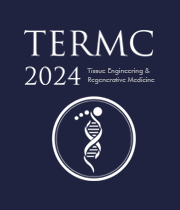Title : Cross talk between H2S and interacting signaling molecule NO under nitroxidative stress response in bacteria
Abstract:
For many years nitric oxide NO, hydrogen sulfide H2S and carbon monoxide CO have been considered toxic gases which at low concentrations present in the atmosphere. Then all these gases have been discovered to be produced endogenously to regulate numerous key physiological functions in all biosystems from E. coli to human – as gasotransmitters. NO was first discovered as the endothelium relaxing factor, while there after a complex of other biological functions have been connected with it. Gasotransmitters share common features. They are small molecules, freely permeable through cell membranes; endogenously generated and are finely regulated. The most important – these agents are obtained vital functions at relatively low concentrations and regulate through similar pathways. Novel experimental data have shown that the above similarities did not base on the same mechanisms It appears, that the one regulator can influence the functions (or levels) of the other, so the agents may interplay on the principle of cooperation to help each other in favor of both. According to our data mono H2S does not function in E. coli as an efficient NO- signaling molecule. It interferes with the true NO signaling pathway to increase in 2.7-4.5 fold DNA repair processes at the SOS and SoxRS DNA repair nitroxidative stress responses.If Pseudomonad aeruginosa treat with complex of (NO donor + sublethal dose of H2S) the level of the bacterial biofilm production will inhibit 3.5-5.0 fold as compared with the mono cell treatment with NO donor. In our similar comparative EPR experiments with E.coli NO donors induced two kinds of the same EPR signals of the DNIC-type g=2,3:, but these obtained the different shapes, depending the variant. The first there was “broad” thiol- containing DNIC signal of [(RS-)2 Fe(NO)2] structure, while the other one was “narrow” protein-bond persulfide (R-S-S-)EPR signal. The narrow signals appeared preferably or exclusively after (NO+H2S) complex cell treatment and correlated with the increased DNA repair potency at the cell.So, in these experiments H2S played as a real defender of the bacterial cell against the nitroxidative stress, induced by NO. We first succeeded in clarifying the different functions of H2S and NO gasotransmitters in genetic signaling processes and studied their molecular- genetic mechanisms.


